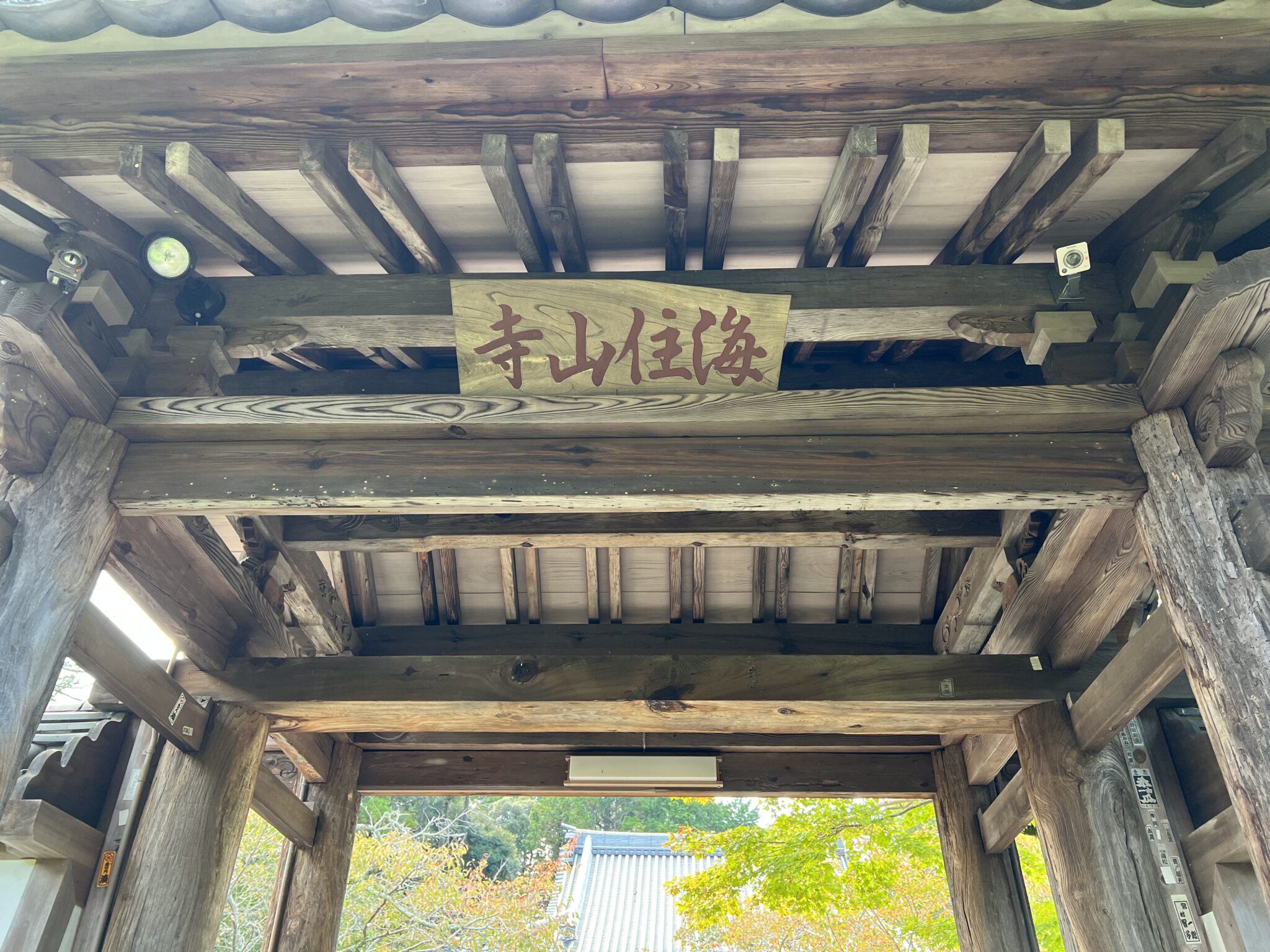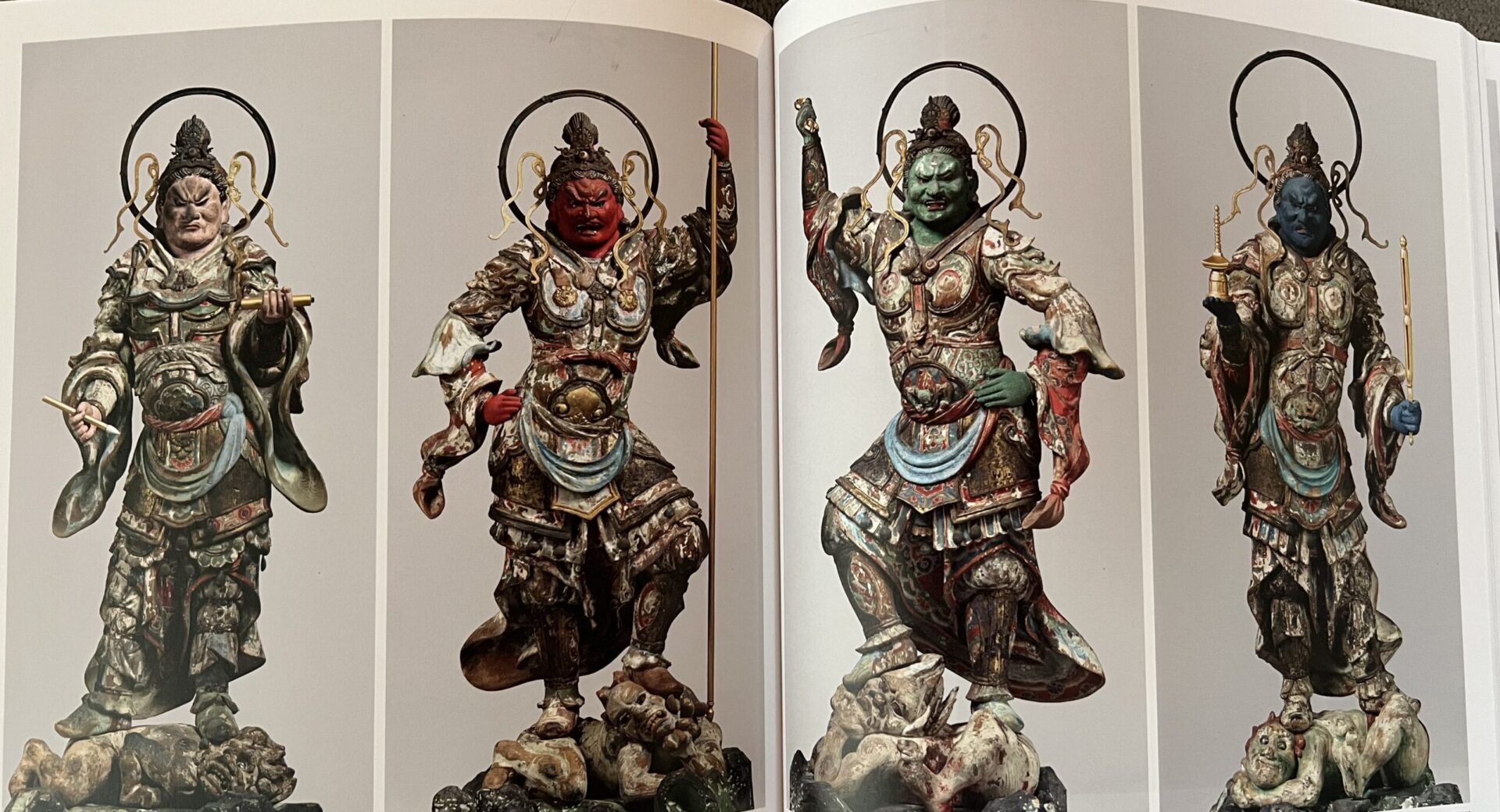Finally, October has arrived, marking the season for the autumn special viewings throughout Nara. I’m excited!
This year, I’m particularly eager to visit the special cultural heritage exhibitions at Kaijūsen-ji and Genkō-ji in Minami Yamashiro.
Special Cultural Heritage Exhibition
October 26 (Sat) – December 1 (Sun)
National Treasure Five-Story Pagoda Open for Viewing
October 26 (Sat) – November 4 (Mon)
Genkō-ji Temple Main Buddha Special Viewing
November 2 (Sat), 3 (Sun)
A bit of a personal favorite, though, are the Four Heavenly Kings statues at Kaijūsen-ji and the Eleven-Faced Kannon seated statue at Genkō-ji. Both are incredibly majestic and look like they could be the protagonists of an anime right now! I’m sure that, even in ancient times, the beauty of the Buddha statues must have been an important factor for those who worshipped them.

It is said that Kaijūsen-ji was restored by Saint Jōkei(1125-1213), who received a divine revelation from Kasuga Daimyōjin and moved there. Both Kaijūsen-ji and Kasagi-dera are located in such steep and rugged places that even when visiting by car, one can’t help but wonder, “Why build a temple on top of such a mountain?” This makes me imagine that Saint Jōkei must have been very strict with himself. Building a temple in this mountainous area, in a time without trucks or cranes, must have required an immense amount of determination and passion.
Kaijūsen-ji is said to have existed even before Emperor Shōmu (701-756) briefly moved the capital from Heijō-kyō to Kuni-kyō, so its history is long. I’ve always been curious why the temple, located in an inland area with no sea, is called Kaijūsen-ji (“Temple of Dwelling in the Sea”). Apparently, it was named by Saint Jōkei to signify “dwelling in the ocean-like vow of Kannon Bodhisattva.” Additionally, the name “sea” also symbolizes the mountain itself, likening it to Mount Potalaka, which is said to rise from the sea.
Today, the approach to the temple gate has been modernized with neatly laid concrete, giving a very contemporary feel. However, the temple, which was originally founded in the Nara period, houses many wonderful treasures. Among them, the vividly colored statues of the Four Heavenly Kings are particularly impressive.

Genkō-ji is located about 3 kilometers from Kaijūsen-ji, and these two temples have been closely connected since ancient times. It seems that Kaijūsen-ji now manages Genkō-ji. I first encountered the rare seated statue of the Eleven-Faced Kannon at Genkō-ji during the Nanzan Yamashiro exhibition at the Tokyo National Museum. I was completely captivated by its seductive and mysterious beauty. This statue is said to depict Kannon seated on Mount Potalaka.
I have longed to see it again, but Genkō-ji is not open to the public without prior arrangements, and the Eleven-Faced Kannon statue is only displayed on special occasions.
The autumn special viewing is one of those precious opportunities to behold its magnificent presence.

Access
There is basically no way to get to the temples in southern Yamashiro except by car. I wrote that renting a car is the only option, and then a friend who tries to avoid using cars as much as possible commented, ‘You can get there by public transportation and walking.’ And they were absolutely right. For those who enjoy the journey itself, I highly recommend hiking in southern Yamashiro. I’d also love to walk there myself when autumn deepens.
By the way, according to the official website of Kaijusen-ji Temple, ‘If you’re coming by bus and on foot from JR Kamo Station, take the Nara Kotsu bus bound for Wazuka-Kosugi, get off at the third stop, “Okazaki,” and it’s about a 40-minute walk from the bus stop.

